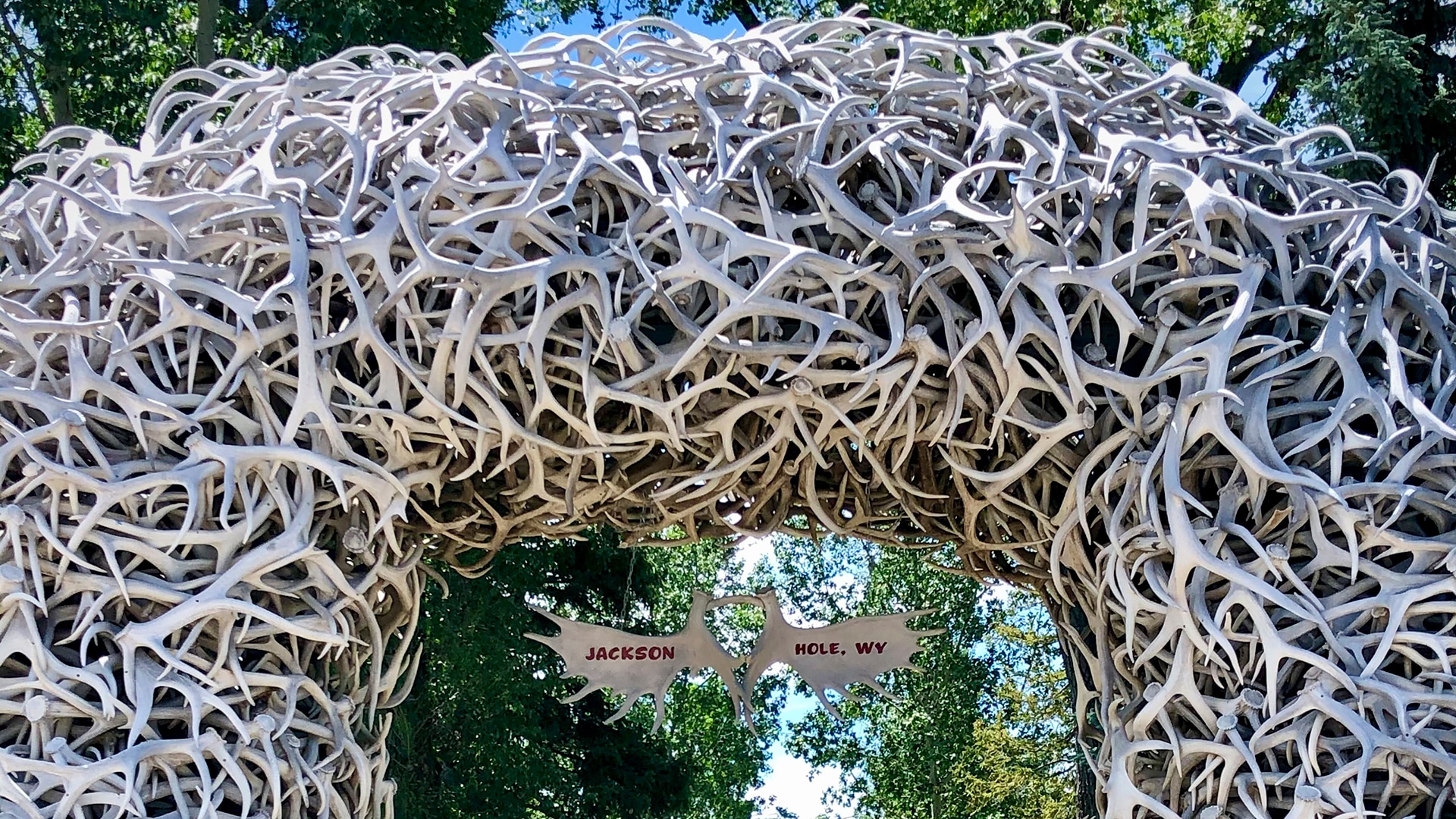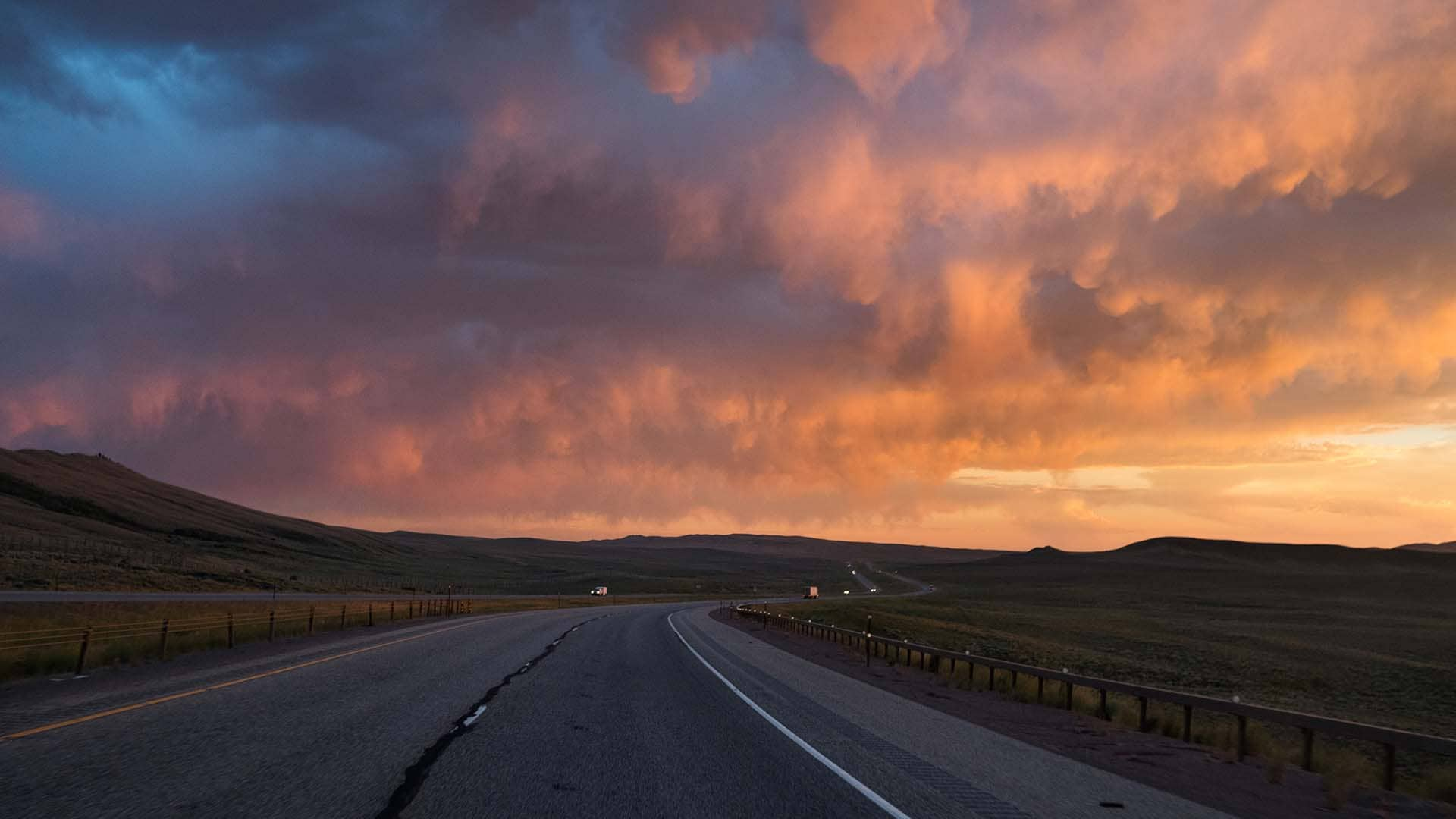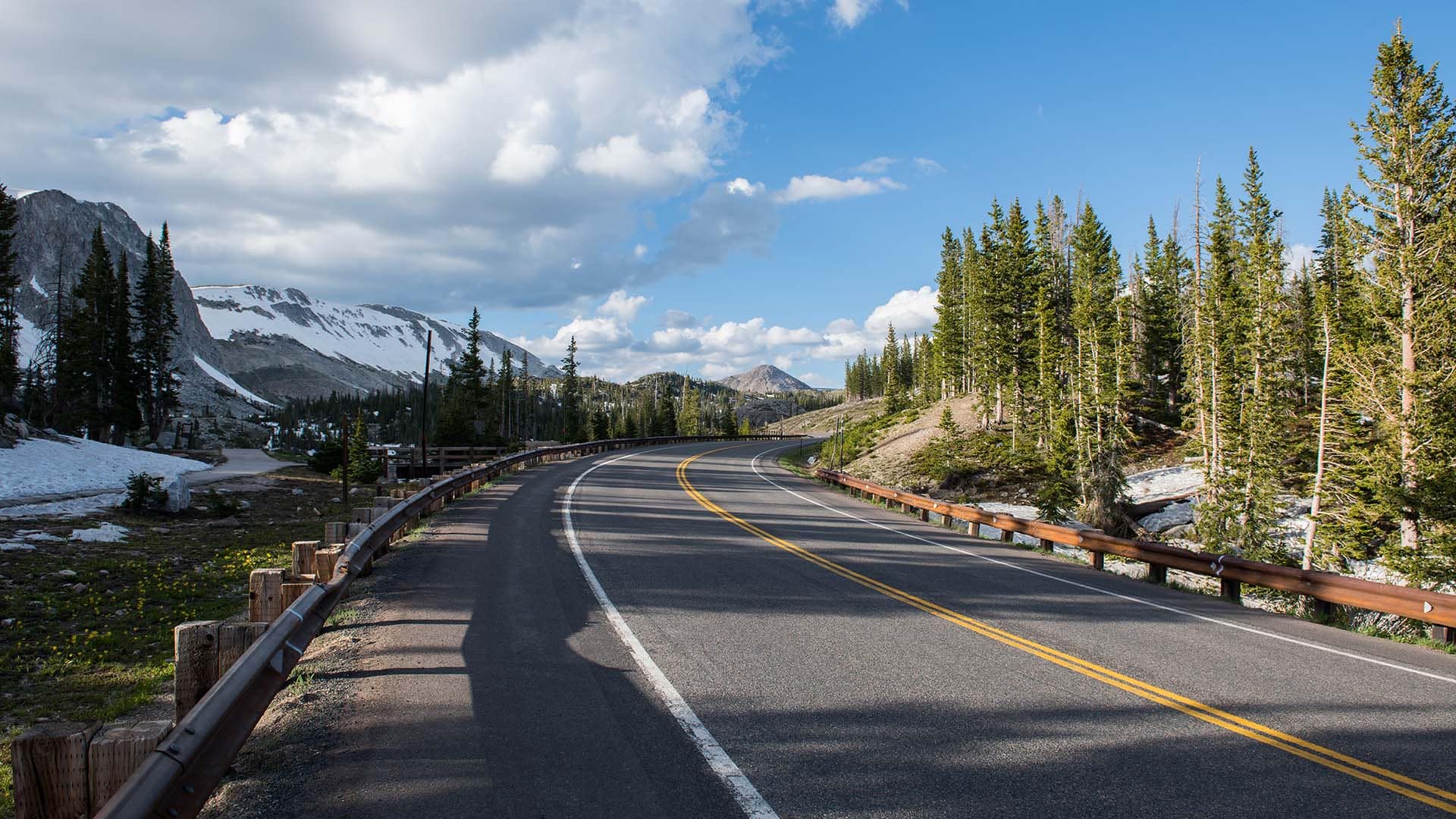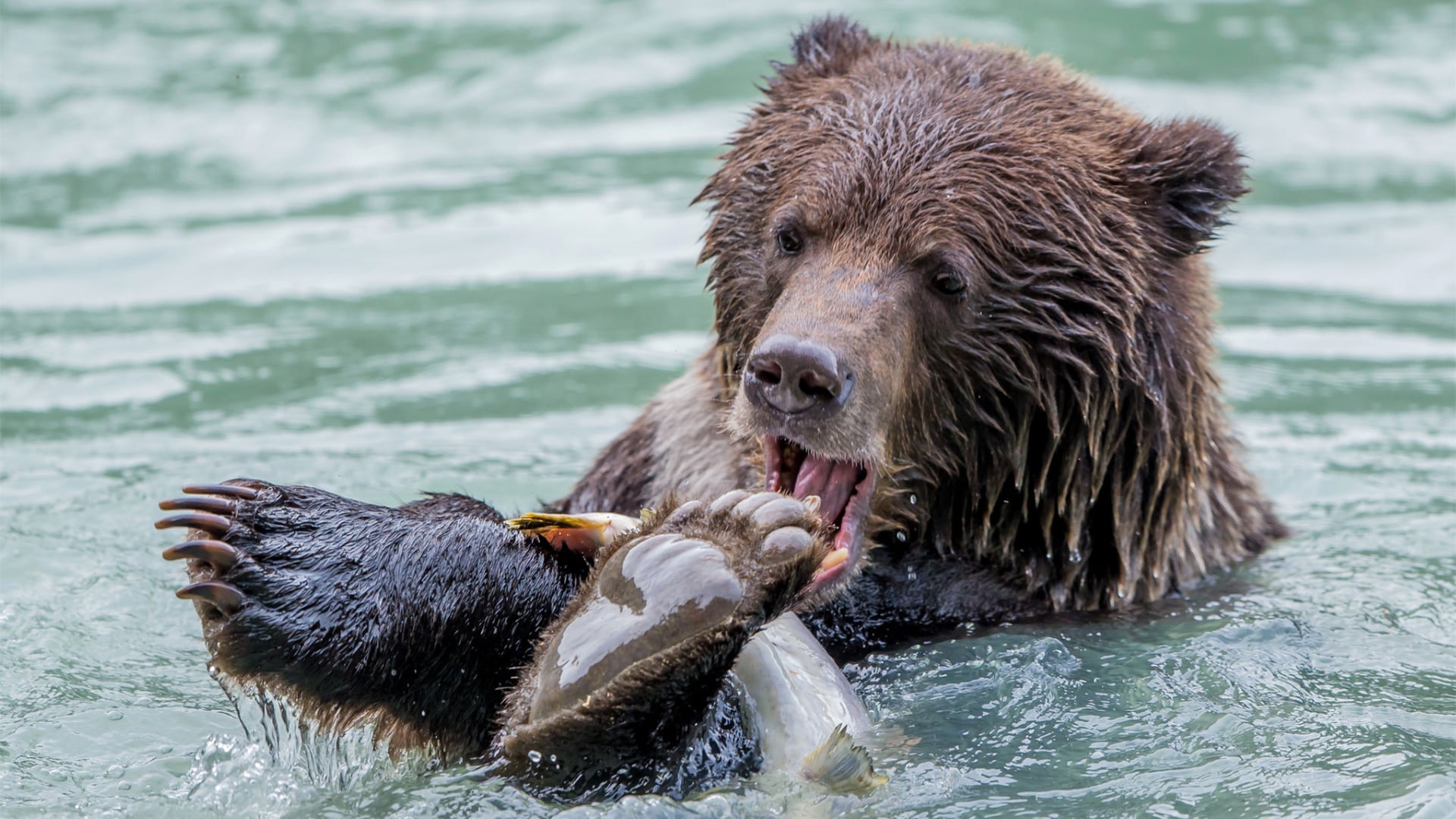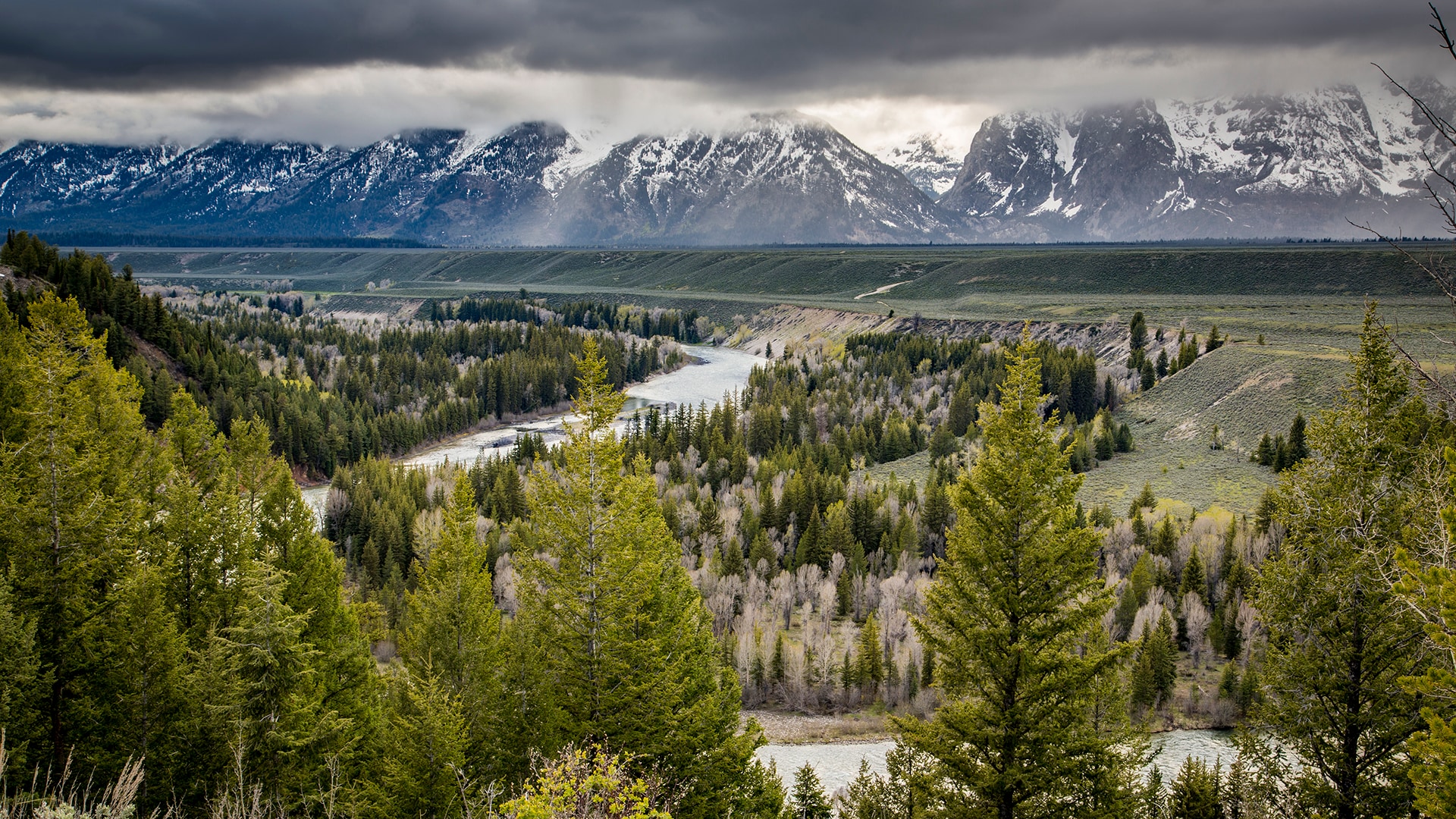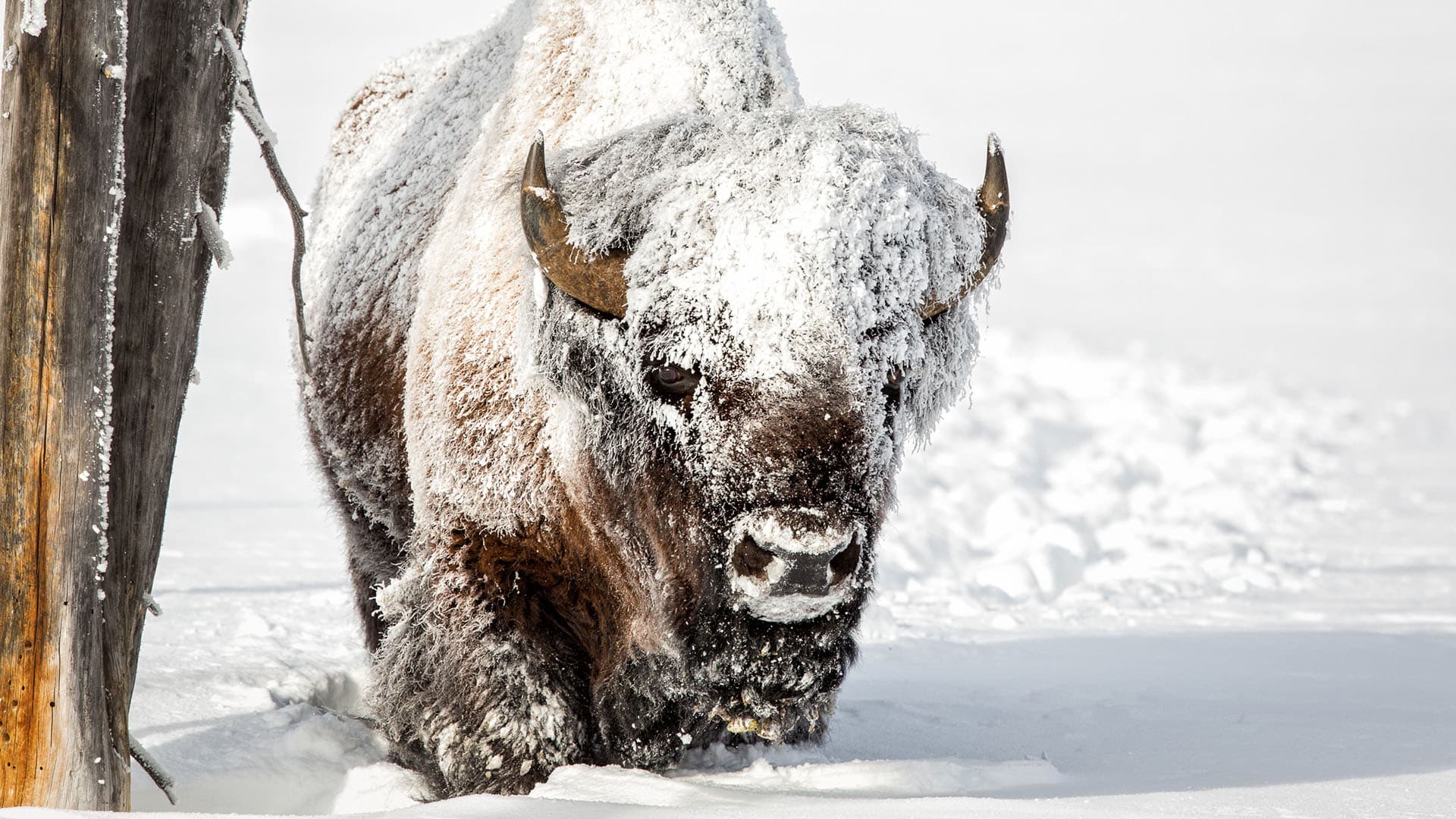Learning to Love Wyoming’s Interstate 80
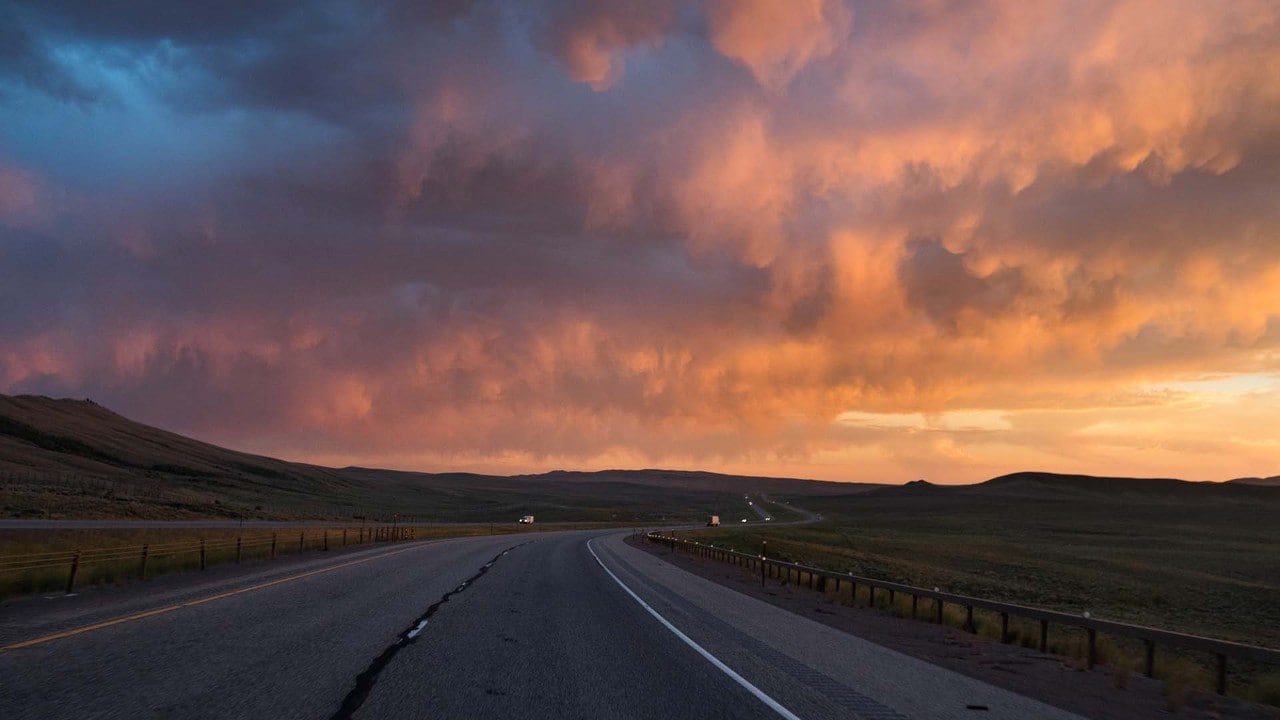
The sun sets on Interstate 80 in southern Wyoming. Afternoon thunderstorms are common during the summer.
Story and photos by Nick Cote
Nick is a travel writer and photographer based in Colorado. See more of his work on his website.
If you’re willing to stop and take some time, you’ll find gems along this highway.
The clouds are always one of the first things I notice when I cross the state line into southern Wyoming. If you’ve never understood what someone means when they say “big sky,” you would start to get it here. Near-perfect clouds, spaced just far enough apart to call the day mostly sunny, drift across the sky, casting a patchwork of shadows over the open range. Antelope dot the rolling plains by the dozen, oblivious to the long-haul truckers and family vacationers speeding past. Most people would say there’s nothing here, set the cruise control and put on a podcast. But with an open mind and a willingness to explore, you’ll find that “nothing” couldn’t be further from the truth. This landscape is very much alive if you’re willing to stop and explore.
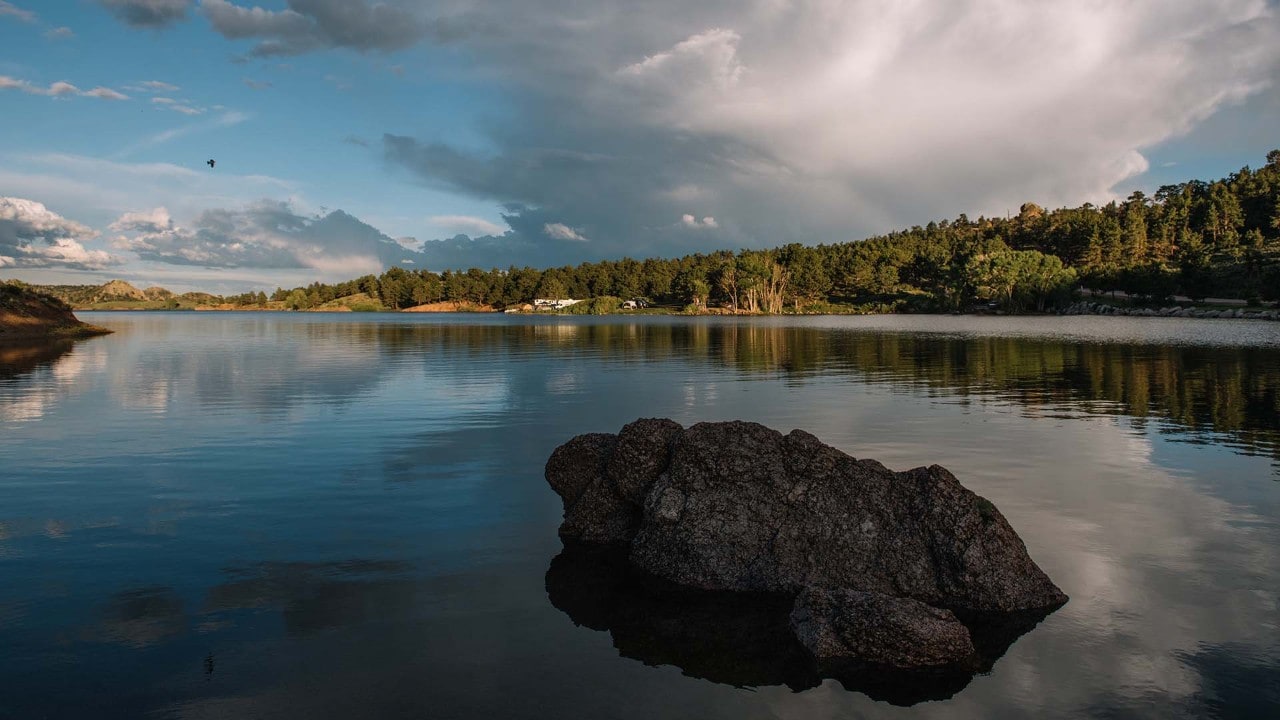
Granite Springs Reservoir at Curt Gowdy State Park

Livestock graze along the side of Interstate 80 near the town of Elk Mountain.
Rediscovering I-80
Crossing Wyoming on Interstate 80 is unlikely to be on any road tripper’s bucket list. Stretching more than 400 miles across the southern edge of the state, it’s far from tourist-packed destinations like Jackson Hole, Yellowstone, Grand Teton National Park and Devils Tower. For many travelers, the drive is an obstacle to overcome, a vast expanse of high desert and flyover country to be crossed as quickly as possible. For most of my life, I was one of those people.
I was born and raised in Moran, Wyoming, a rural community on the outskirts of Jackson Hole, tucked between Yellowstone and Grand Teton national parks up in the far northwest corner of the state. Surrounded by nationally designated wild and scenic rivers, massive elk migrations and some of the most remote wilderness areas in the lower 48, it’s the part of the state that most people dream of visiting. But by Wyoming standards, it’s the undisputed, touristy black sheep of the Cowboy State. Sequestered by mountain ranges and deep canyons, it’s both geographically and culturally removed from what most Wyomingites consider the “real” Wyoming. It’s a posh haven of wine and cigars awash in a sea of whiskey and cigarettes.
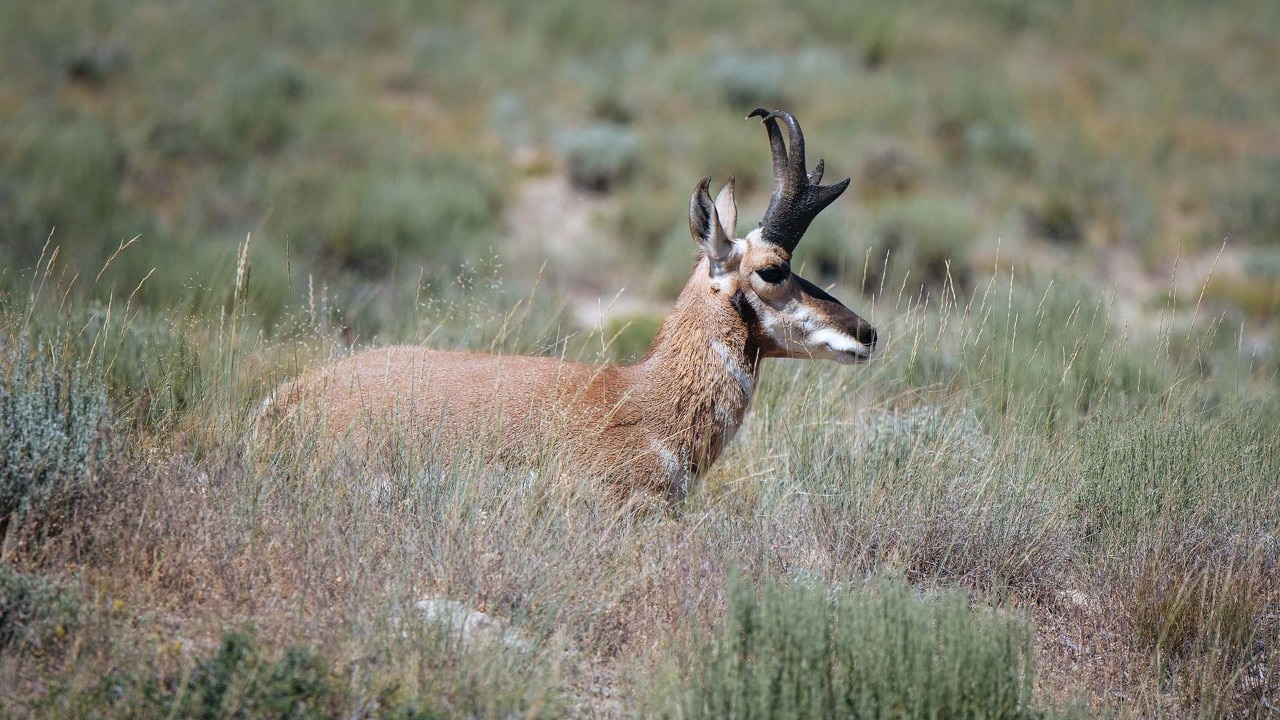
Antelope live in the open sagebrush plains of southern Wyoming.

The McFadden Ridge Wind Farm is one of many that are situated along Interstate 80.
Appreciating the Land
In the past few years, I’ve made the drive across I-80 numerous times to visit Jackson, Wyoming, from Boulder, Colorado. During the winter it can be downright nasty — temperatures dip into double digits below zero, winds gust up to 75 mph and 2- to 3-foot snowdrifts can close the highway for days at a time. I used to dread the road, even during the summer. But over time, my boredom was overcome by curiosity, and I started to make more stops along the way for points of interest, historic sites and scenic views. Then, I happened to take on some assignments that put me in the heart of southern Wyoming, exploring places like Baggs, Wamsutter, Saratoga, Rawlins and Rock Springs.
One assignment took me to the tiny outpost of Elk Mountain (population 191). It was the kind of place I’d wondered about but never bothered to visit, always opting to keep pushing toward my destination. But there I was riding shotgun with a cattle rancher on rutted dirt roads crisscrossing his land, right in the middle of “nowhere.” We drove through the sagebrush-covered mesas at a snail’s pace, talking about the intricacies of the plains ecosystem and the role that land managers, ranchers and recreationists play in keeping open spaces just that: open. We shared the surprise that even though both of us were born and raised in Wyoming, neither of us had been to the place where the other was from, other than just passing through. Our interpretations of what “Wyoming” meant were wildly different, but our appreciation for it the same.

Trains haul coal at the historic Union Pacific Railroad train depot in Green River, Wyoming.
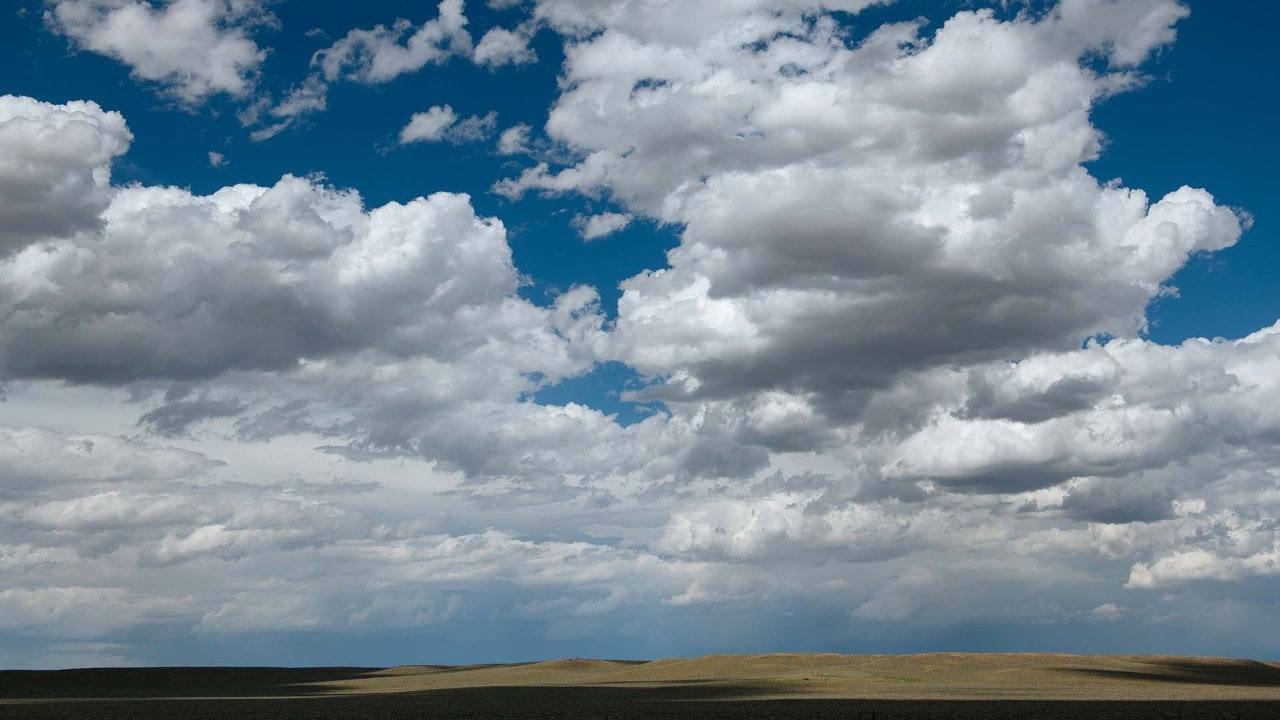
Rolling hills and billowing clouds are a common sight along Interstate 80 in southern Wyoming.
Simple, Timeless Beauty
On recent trips, I’ve budgeted more time to explore. From the shifting sand dunes of the Red Desert to the high alpine lakes in the Medicine Bow-Routt National Forest, my list of places to see keeps growing. At Curt Gowdy State Park, I’ve found deep-blue lakes surrounded by dozens of miles of uncrowded trails for hikers and mountain bikers. At Vedauwoo Recreation Area, long a popular destination for rock climbers, towering granite columns called hoodoos form passageways and tunnels that are perfect for exploring when you need a driving break. Ruts from wagon trains packed with homesteaders and gold miners are still cut deep into the prairie, at some points running parallel to the modern interstate.
It’s easy to understand the beauty of places like Grand Teton or Yellowstone. They come just short of smacking you over the head with their snow-capped peaks, vibrant thermal pools and picturesque lodgepole pine forests. But where it’s less obvious, you have to slow down and be open to discoveries. You’ll start to notice the rocks burning with bright orange lichen, the intense aroma of the sagebrush ocean in front of you and the unending depth of the sky above. You’ll understand why we call it “big, beautiful Wyoming.”
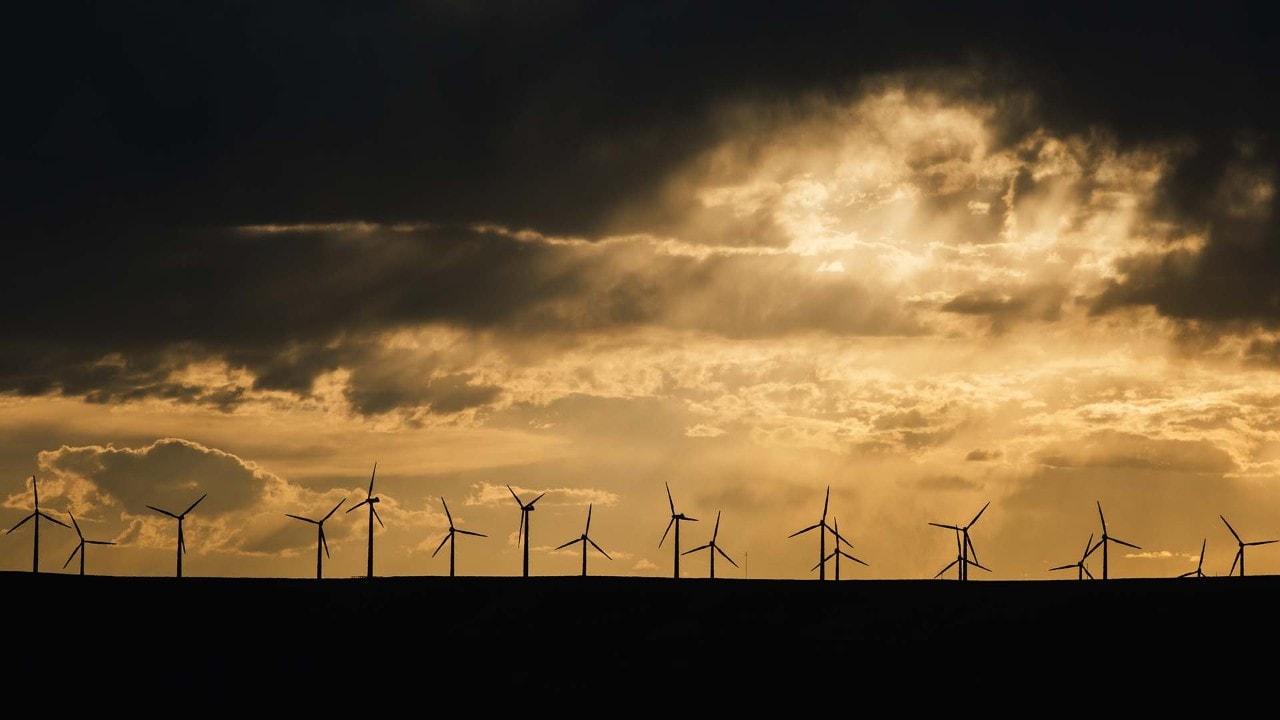
Southern Wyoming is known for constant high winds, making it a vital wind-energy hub.
Related
Read more stories about Wyoming.
- Road Trip from Denver to Glacier National Park
- Jackson, Wyoming, Makes a Great Base for Scenic Drives
- Road Trip Through Southern Wyoming
- Road Trip to Snowy Range Scenic Byway
- Road Trip to Wyoming's Flaming Gorge
- Cold Weather Destinations
- Nature Photography Tips
- Cold Weather Photography Tips
- Wyoming Trips
- Grand Teton National Park
- Yellowstone National Park in Winter
- An American Safari


